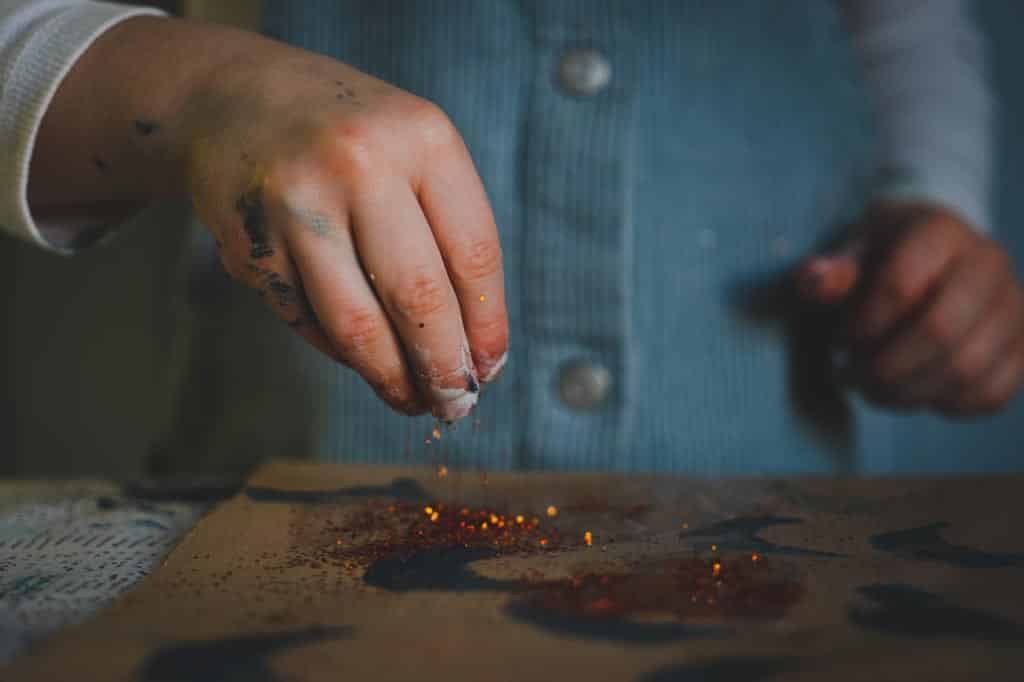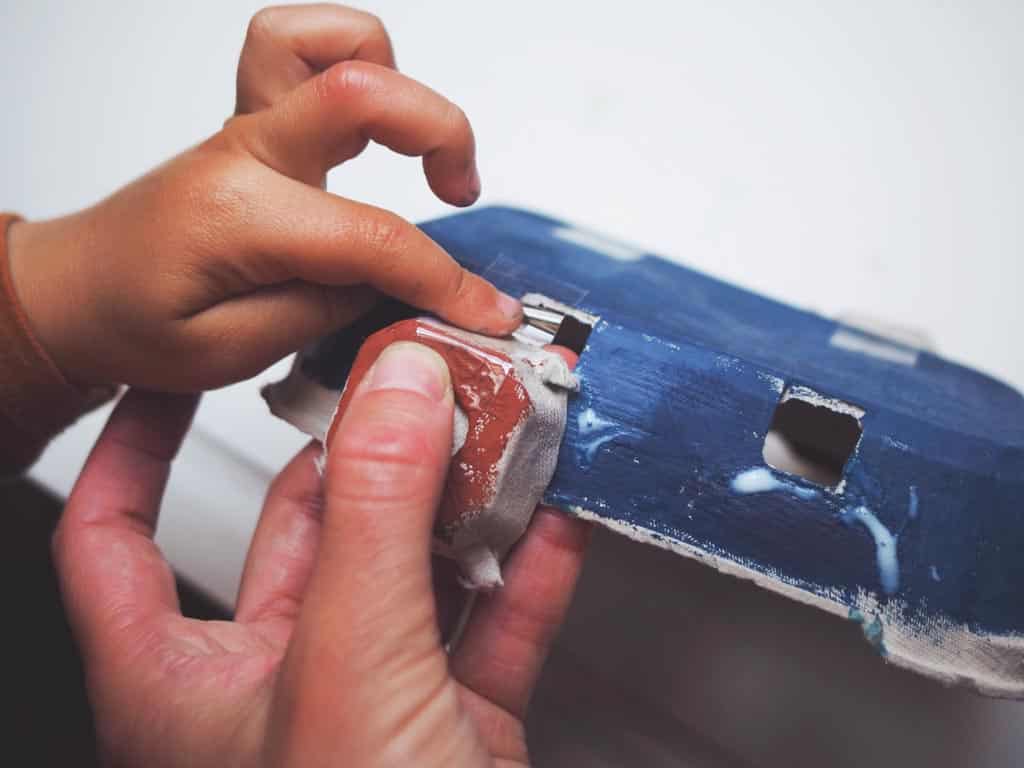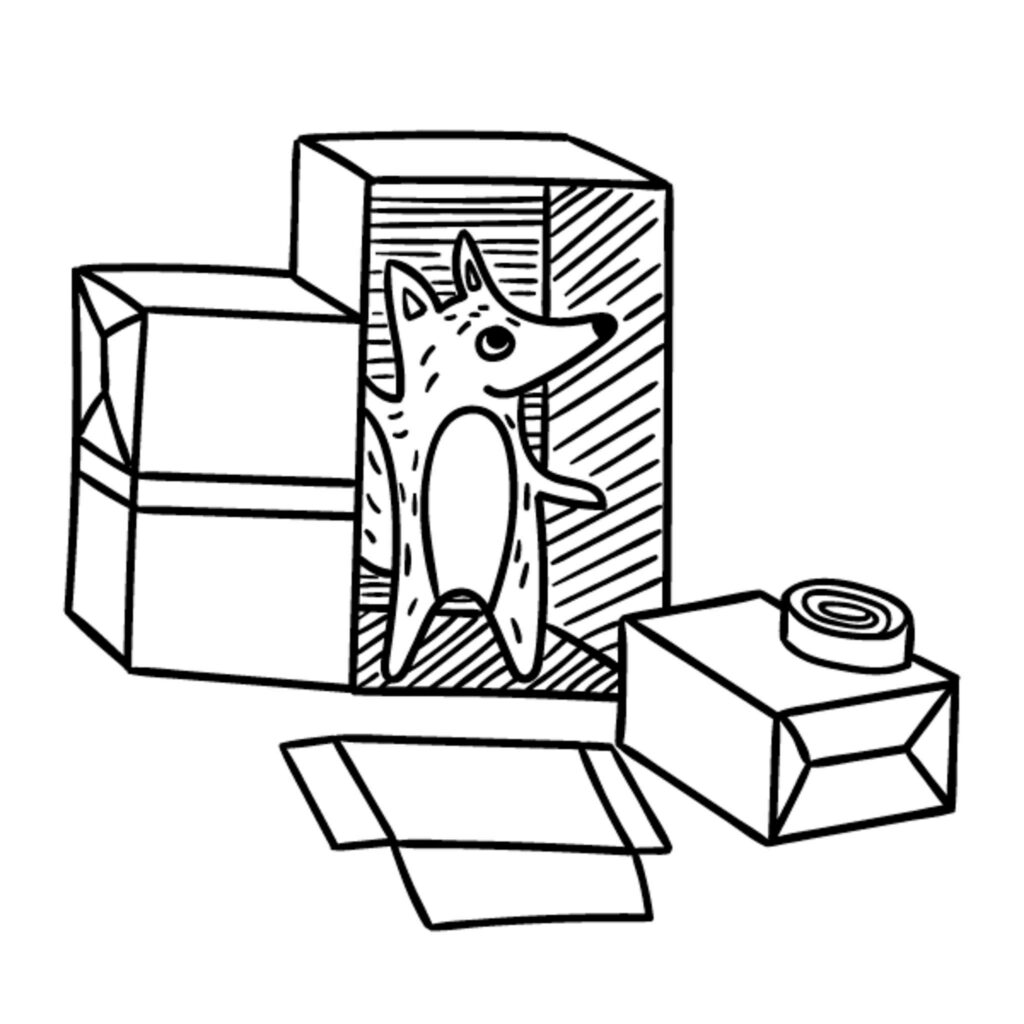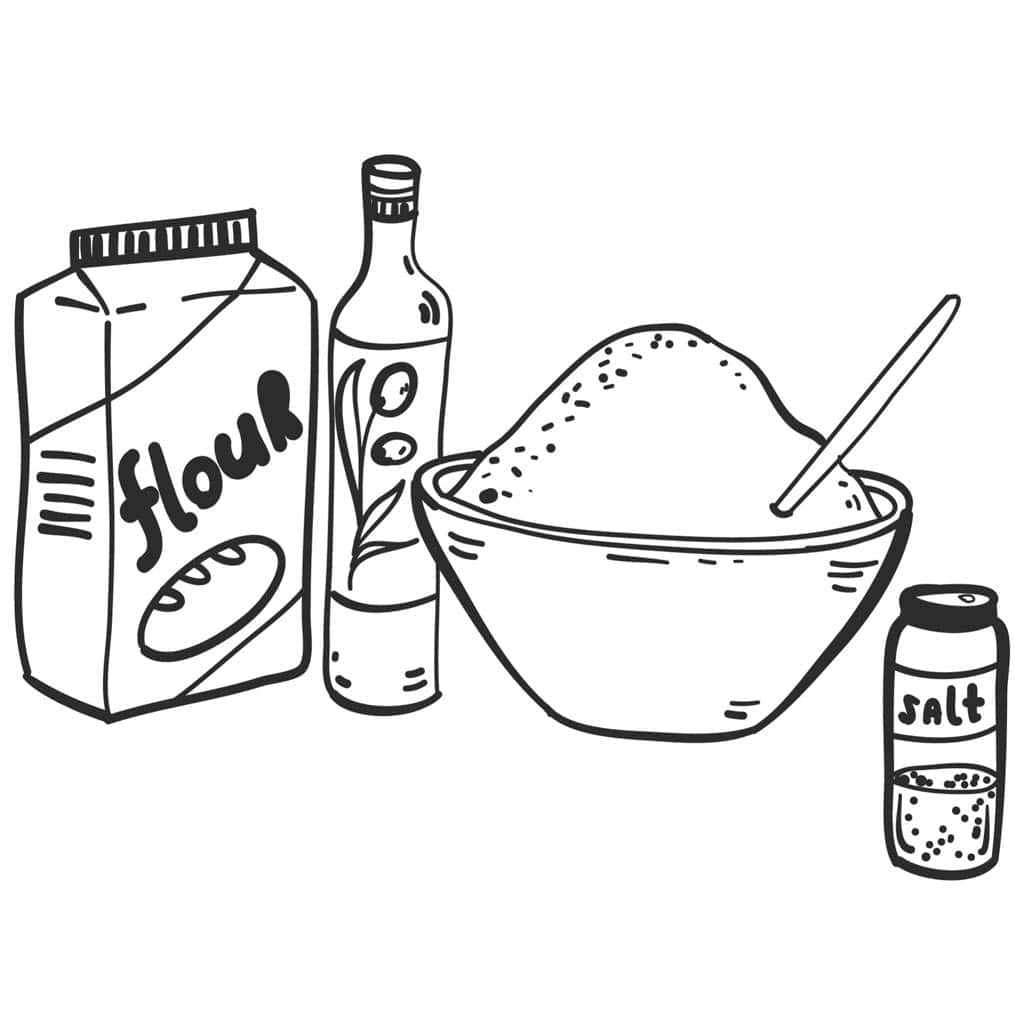Sometimes you want to draw a picture.
And you want it to look like something.
A picture to give to Grandma that she can hang on her wall.
Something like this, perhaps:
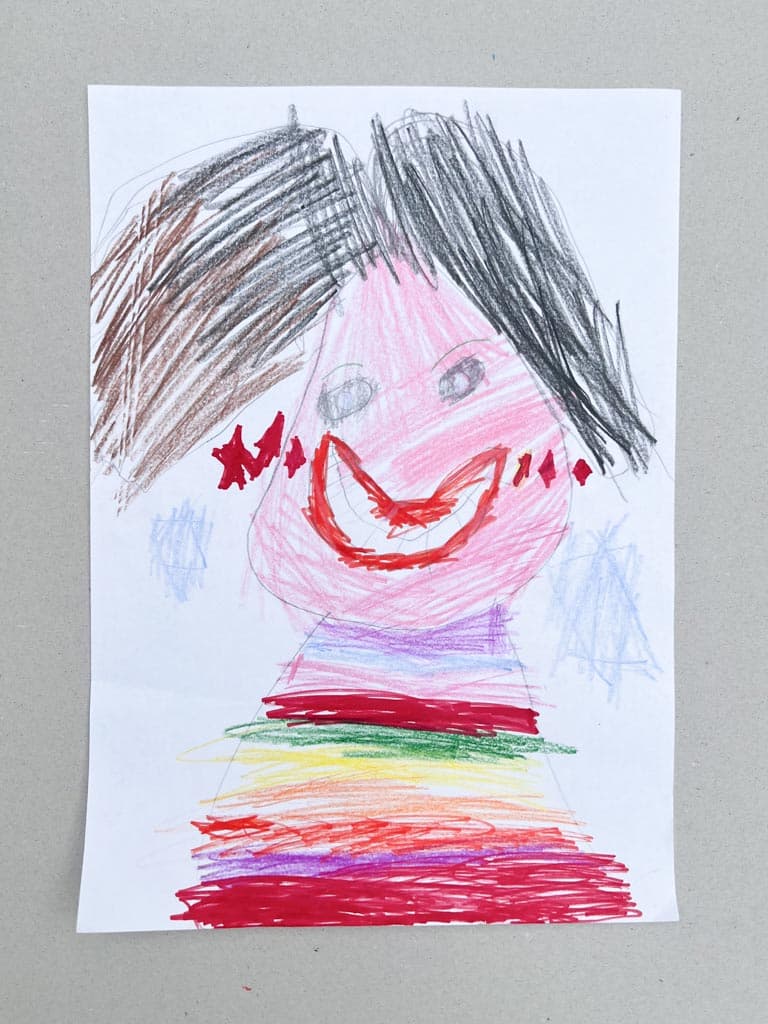
But that’s not what young children usually do.
Usually, they are caught up in the moment, playing with the materials, seeing what they can do.
They don’t care what it looks like. They have no goal in mind – and no audience.
Here’s the same child, my five-year-old, a month earlier. This time she’s painting.
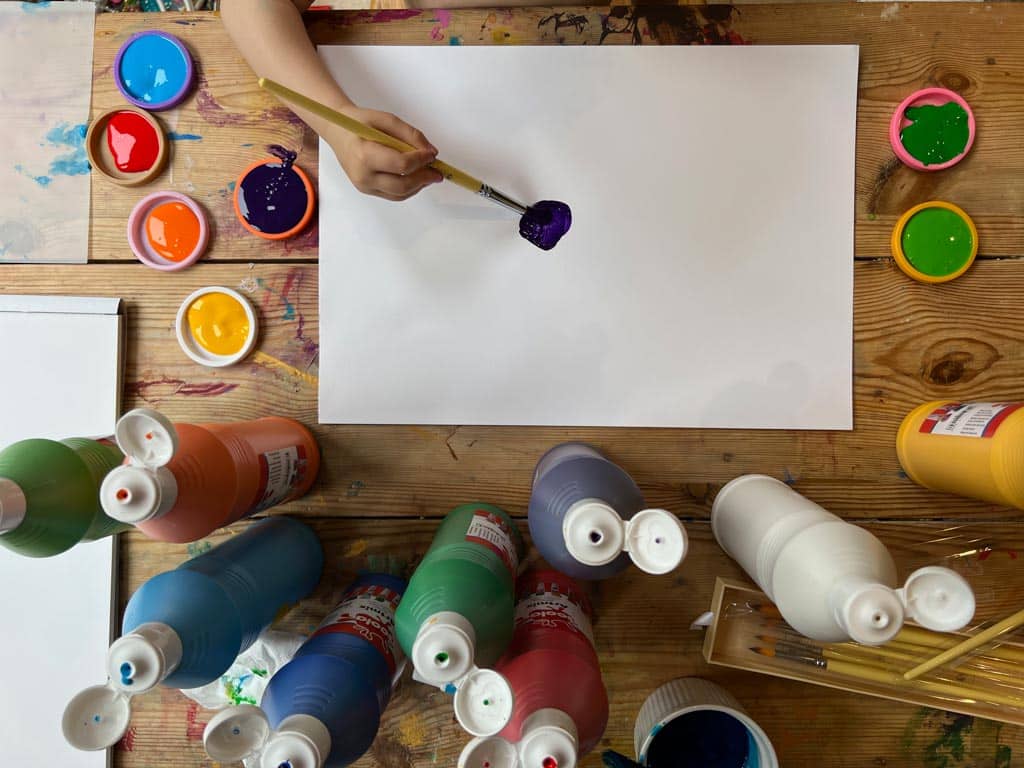
That’s a nice circle. Maybe I’ll paint another one.
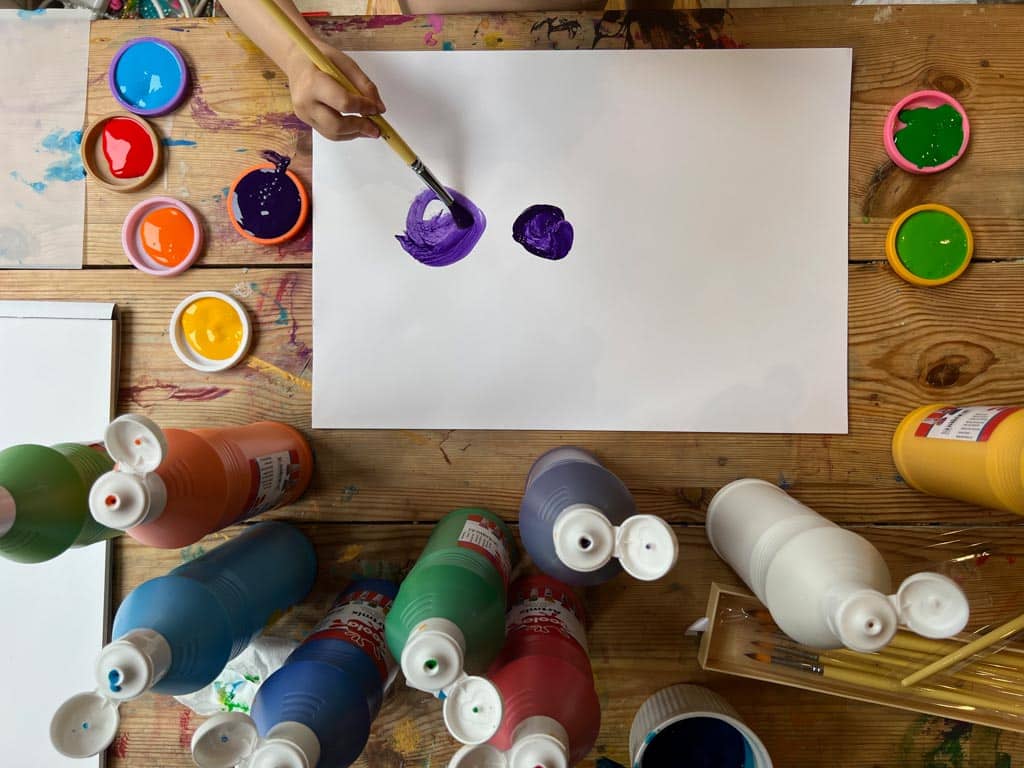
Maybe a few more?
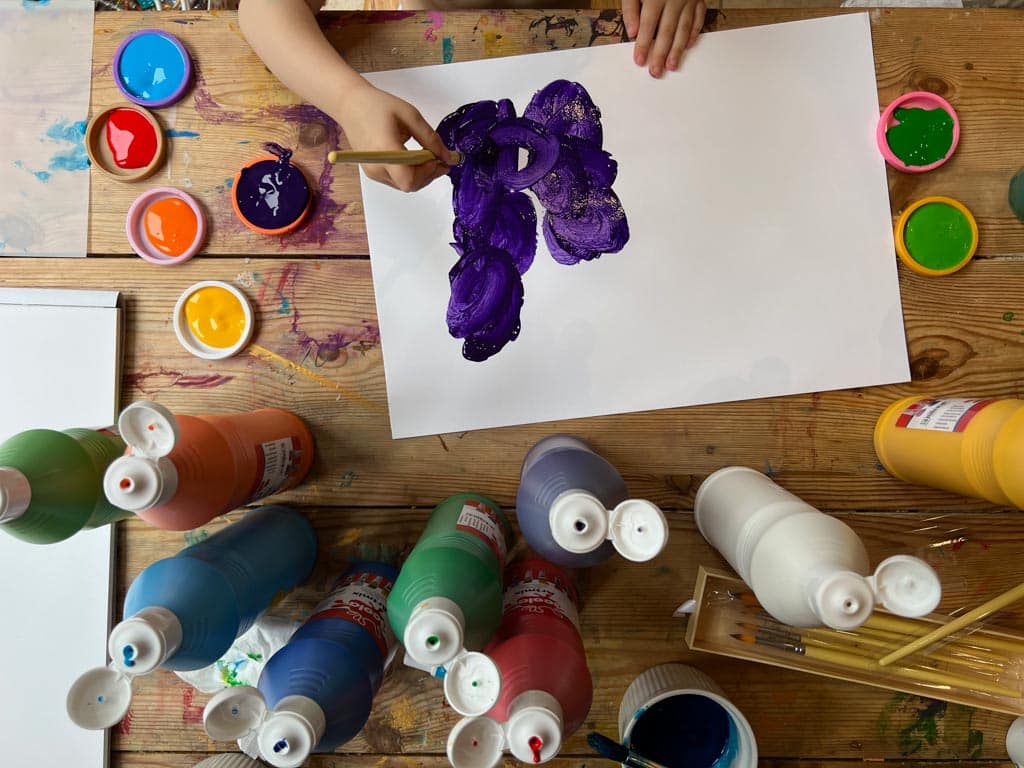
What if I fill in the gaps?
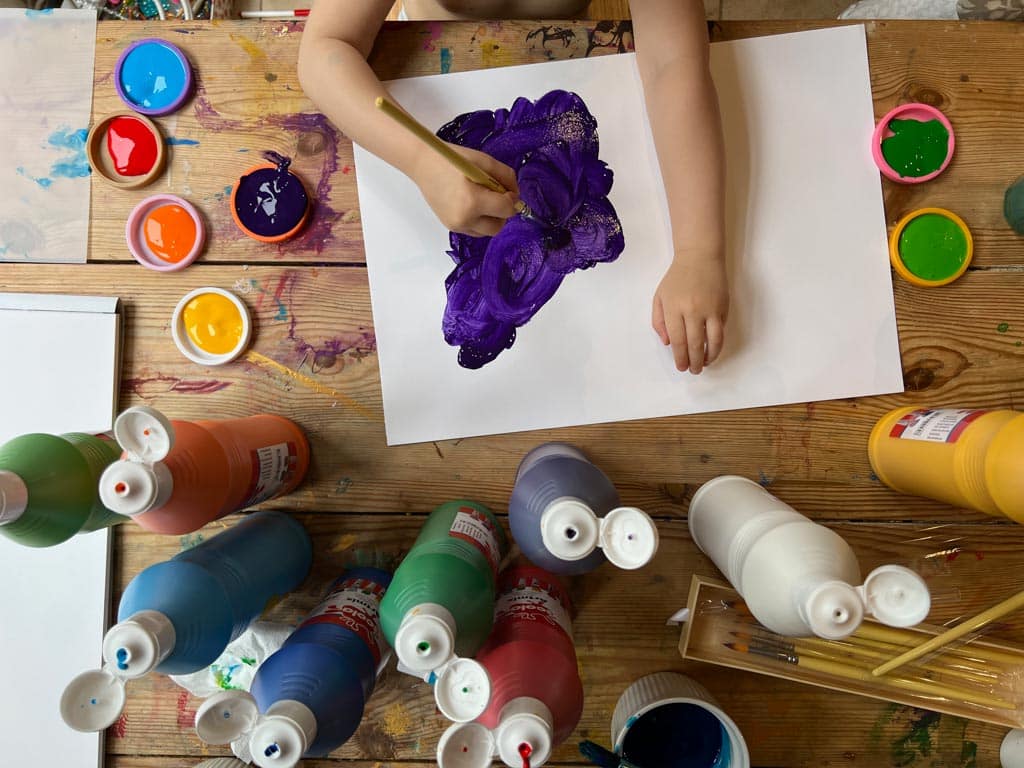
It’s almost a rectangle. What if I complete it?
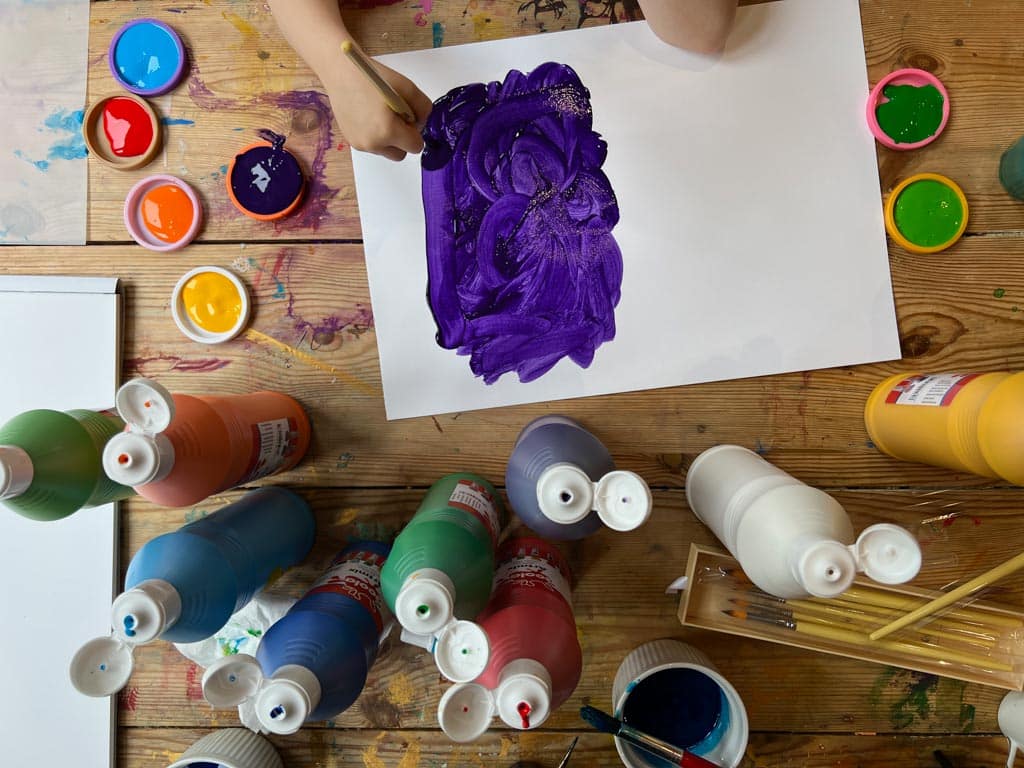
Actually, the whole page is a rectangle! What if I go to the edge?
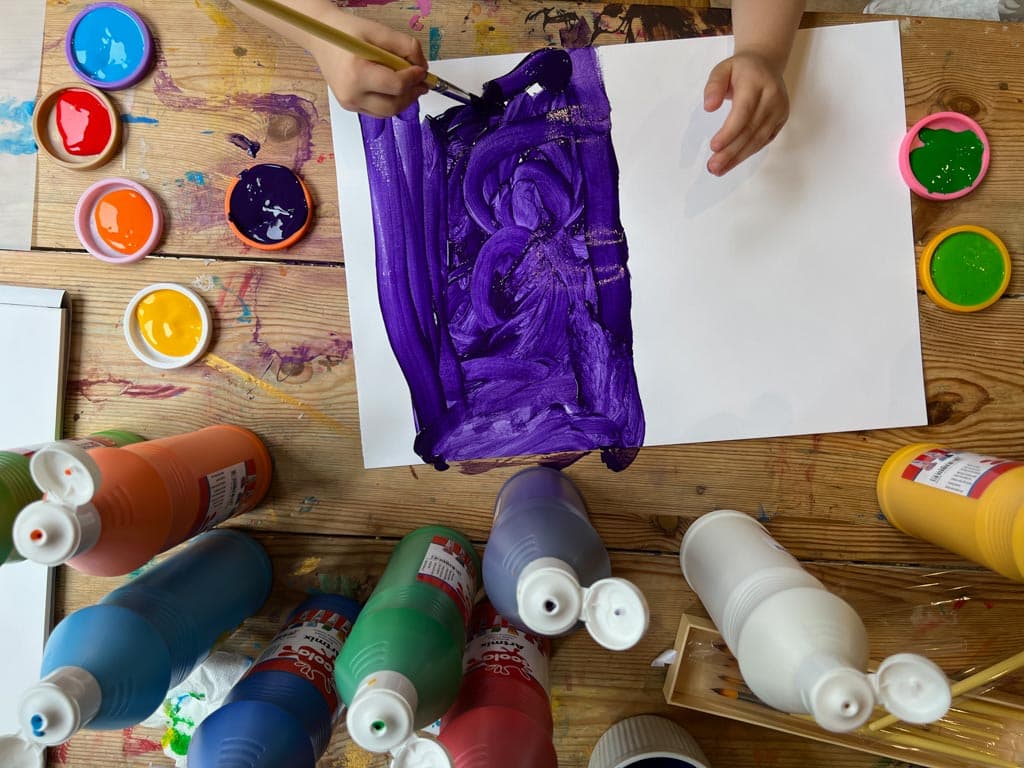
Looking good! I am covering all the white. It’s disappearing. But something’s missing. I know, more colours!
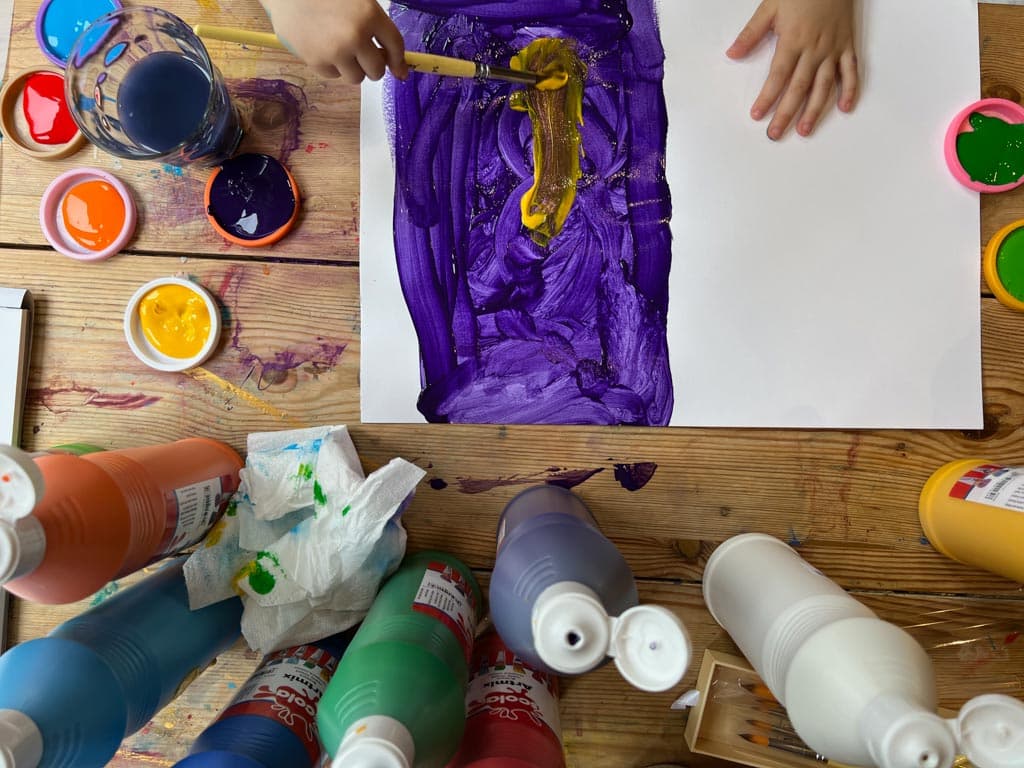
Nice! How about some blue?
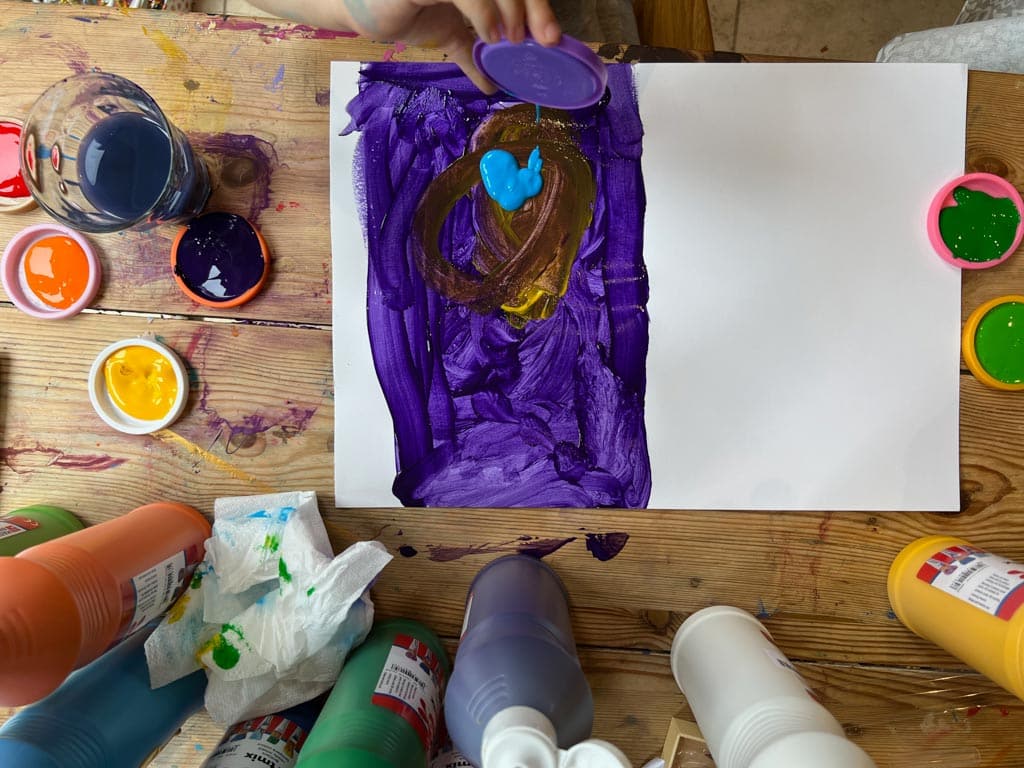
And some fingers!
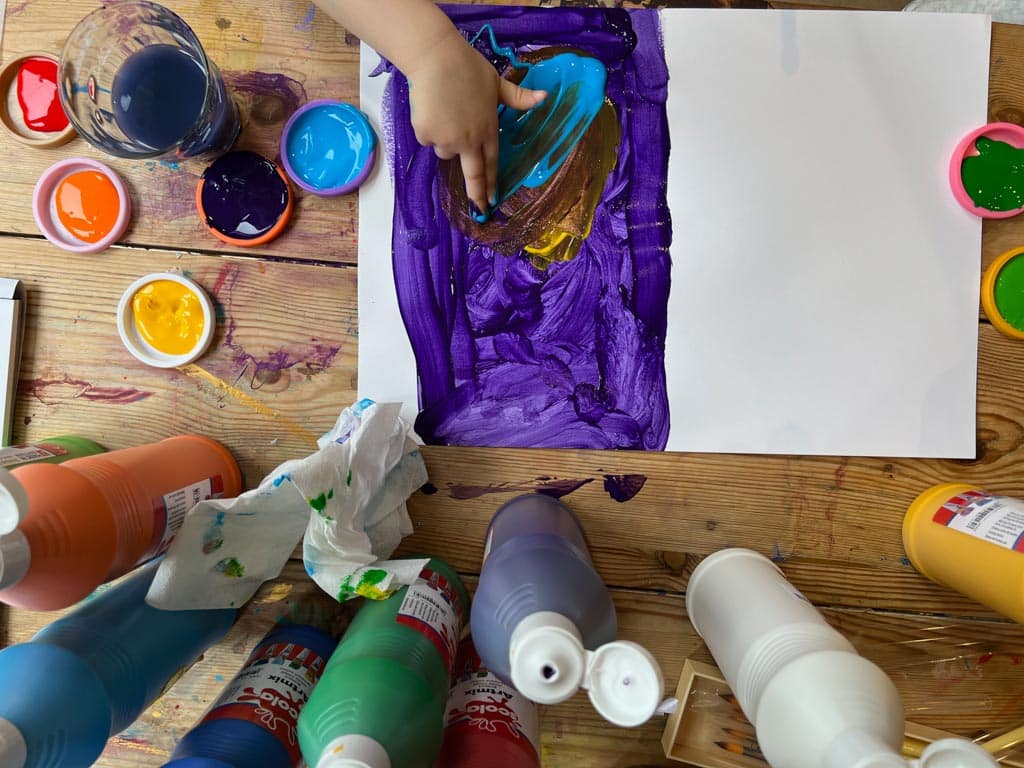
Time for a hand…
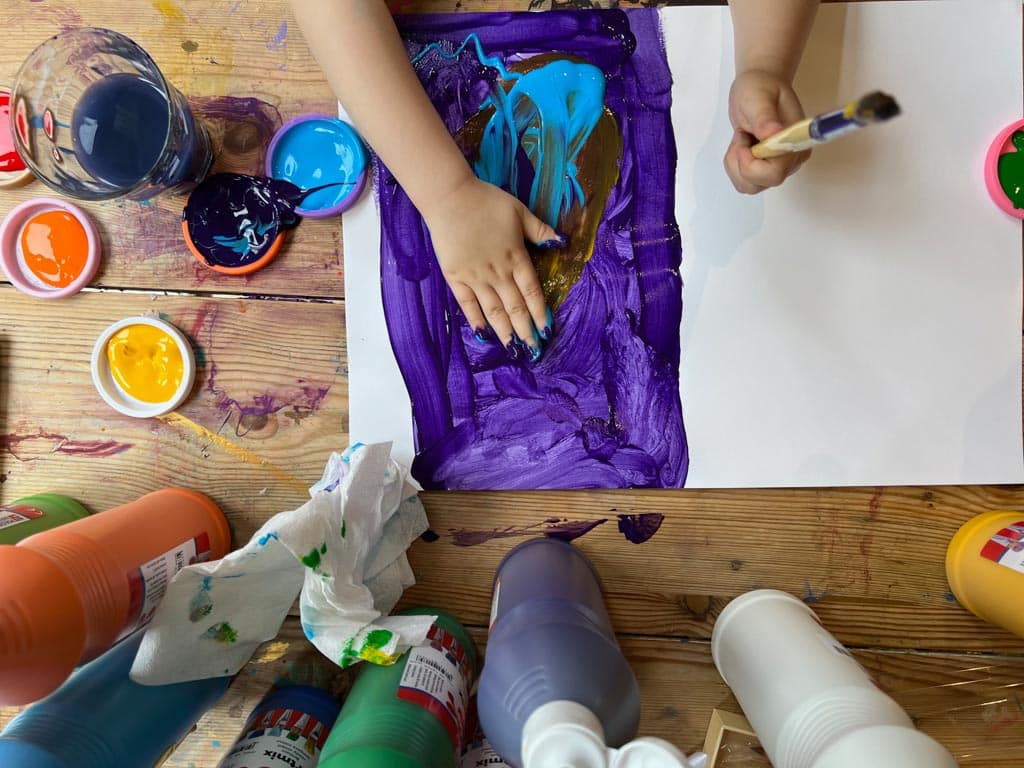
I know, I’ll cover my hands…
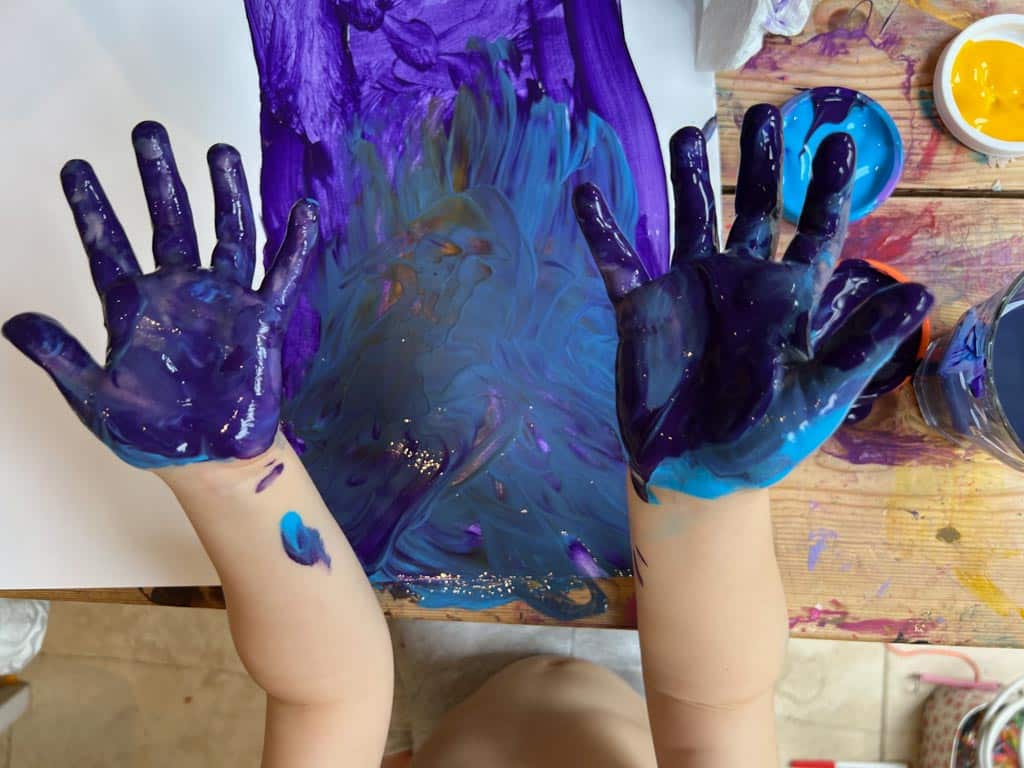
Where will it all end?
Here we are, the finished piece:
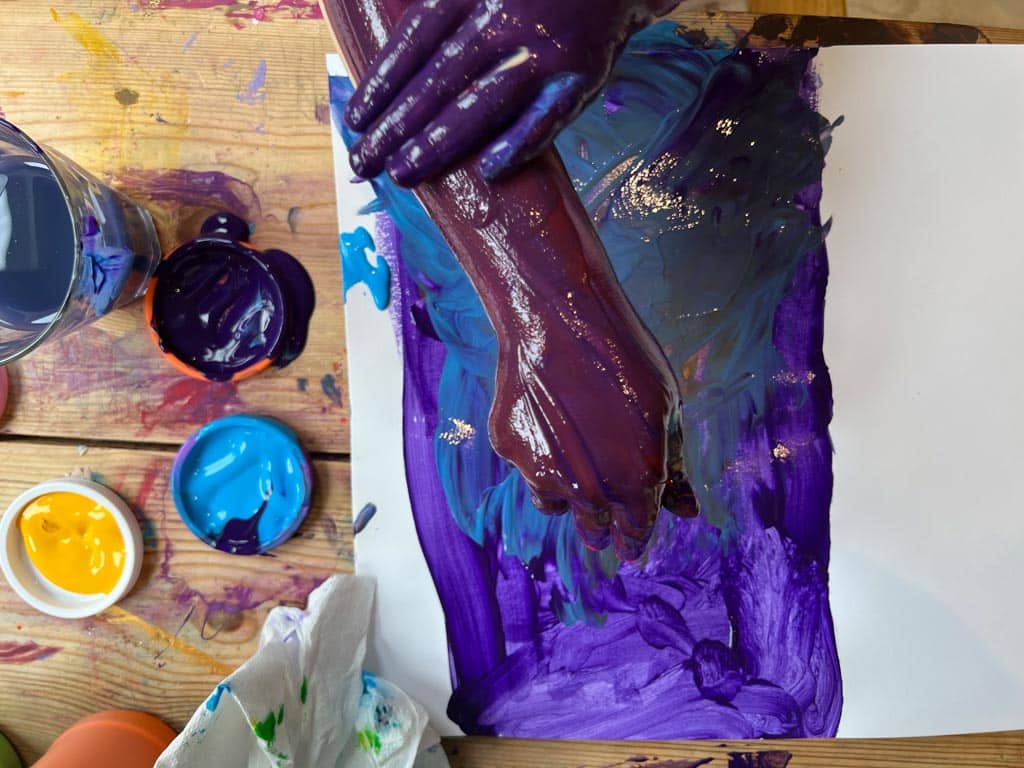
Were you hoping for a painting of Grandma?
My daughter started off with the paints but didn’t have anything in mind. She just enjoyed the process and eventually a theme emerged.
It turns out that what she really cared about was the exploring the enveloping schema. Enveloping is the idea that things that are covered continue to exist. Dolls wrapped in blankets, keys posted behind the radiator, paper covered in paint, hands in pockets. It starts as object permanence in babies. It’s a long road and there is a lot to learn.
Process art is brilliant because you don’t know where you’re going until you get there.
It emphasises the experience and act of making, rather than the final product. It’s about letting your child explore materials and express herself freely. It celebrates creativity, exploration, and discovery. Your child is able to learn from mistakes in a pressure-free way, and, most importantly, have fun.
Don’t ask what it is
What’s your picture about?
It’s a seemingly innocent question.
But children know that adults like to label things – and they like to please their parents – so they give you a label:
It’s a car. It’s mummy. It’s a house.
But that’s not what your child was thinking.
She probably wasn’t thinking of anything at all. The odds are that it was all one big experiment. I wonder what happens if I do this… It was probably process art.
Ask open-ended questions instead, such as, “Tell me about what you made” or “How did you feel while you were creating?” This allows your child to reflect on her process and express her thoughts and emotions.
How to set up for process art
When offering process art to preschoolers, it’s essential to create an environment that fosters exploration and encourages individuality. Here are some guidelines to consider:
Materials
Provide a variety of age-appropriate art materials, such as paints, crayons, markers, clay, collage materials (like paper scraps or fabric), stamps, and natural objects (leaves, flowers).
Don’t interfere
Encourage your child to express herself freely without imposing specific rules or instructions. Allow her to make her own choices about colours, materials, and techniques. Avoid the temptation to intervene or direct her creative process too much.
Open-ended prompts
Instead of providing step-by-step instructions, offer open-ended prompts or questions to stimulate their imagination. Perhaps you leave a selection of textured materials on the table. Will your child take rubbings? Copy the patterns with a pencil? Press them into playdough? Or load them up with paint and makes prints.
There is no right answer. It’s all about the process.
Sensory engagement
There is often a strong sensory element to process art. As you saw with the example at the top, my daughter enjoyed the watching the paint cover the page, fascinated by the way the glossy, purple paint obliterated the white. Would it also obliterate her pale skin? There was only one way to find out!
You can make paint more interesting by changing its consitency. Try PVA glue, water, sand or washing-up liquid.
Don’t critique or praise
Remember that the focus is on the process, not the end result. Avoid praising or critiquing the artwork, as this may shift your child’s attention away from the creative experience. Instead, provide positive reinforcement by acknowledging her efforts, curiosity, and engagement in the artistic process.
Templates are boring
Getting the craft box out to make decorations and cards with our children sounds like a cosy, Pinterest-friendly activity but it can all too often end in disaster. We get annoyed when they do it wrong, criticise them for making a mess, make them do things again to achieve a better result. Everyone is miserable and craft becomes something no-one wants to do.⠀⠀⠀⠀
If you can resist making rigid plans and imposing your own design ideas on your child, you may find you are more pleased with the results than you expected. ⠀⠀
Some activities
There’s nothing special about any of the below. Pick one, sit back and see what your child comes up with.
Finger painting. Give your child paint and let her use her fingers to make marks on paper. She can mix colours, make patterns, or just enjoy the texture and feel of the paint.
Collage making. Provide a variety of materials like fabric scraps, buttons, paper, and more.
Nature art. Collect leaves, twigs, flowers, and other natural materials. Arrange them on paper. There’s no need to stick it down.
Clay or play dough exploration. Simply offer the material and allow your child to explore.
Watercolor exploration. Offer watercolours and experiment. Mix colours, add water, allow the paper to get too wet. See what happens.
Printing with objects. Use everyday objects like sponges, forks, or toy cars. Dip them in paint and press them onto paper, creating unique patterns and prints.
String art. Dip yarn or string in paint, then drag, swirl, or press it onto paper.
Marble painting. Place paper in a tray, drop paint-dipped marbles or small balls in, and tilt the tray to roll the marbles around.
Salt and watercolour. Try sprinkling salt onto your watercolour picture while the paint is still wet. It creates fascinating textures and patterns as it interacts with the paint.
Shaving cream art. Spread shaving cream on a tray, drop some food colouring or liquid watercolors, and let the child swirl colors and patterns. You can press a paper on top to capture some designs.
Drip painting. Drop thinned paint onto paper using pipettes.
Final word
Much like open-ended play, process art is about offering the materials and see what your child comes up with. There’s no right or wrong. The end result is not the point.
Fine motor control, spatial reasoning, an appreciation of colour and the development of an aesthetic sense all spring from the process. Whether the finished product looks like a Vermeer is irrelevant. At this age, it’s the skills that are important. Learning how to apply glue using a spreader, how to manage paint on a brush or draw zig-zag lines. Time and space to explore are all you need.⠀⠀⠀⠀⠀⠀⠀⠀⠀
You can still influence the results – at Christmas provide only green and red paint, silver and gold glitter and shiny craft paper, for example. But let your child decide what to do with it. The result may not be Pinterest-perfect, but the skills they learn will last forever.

